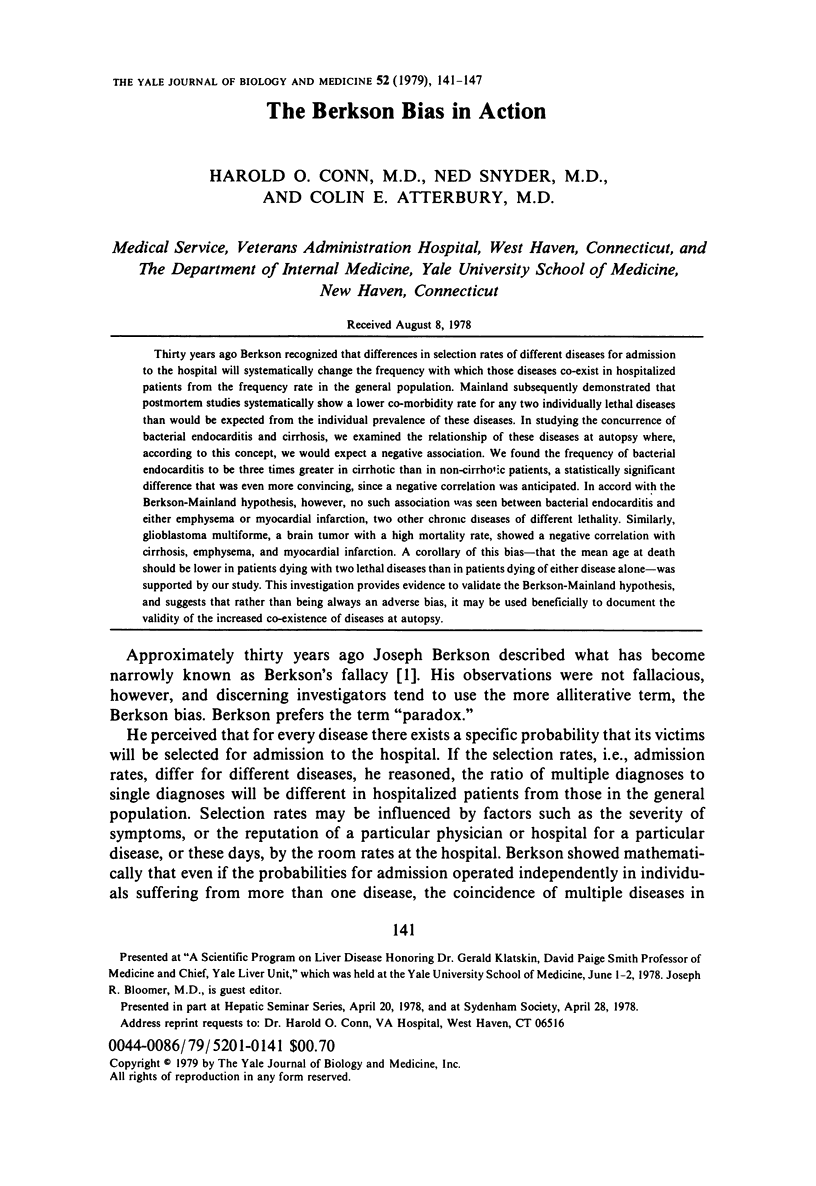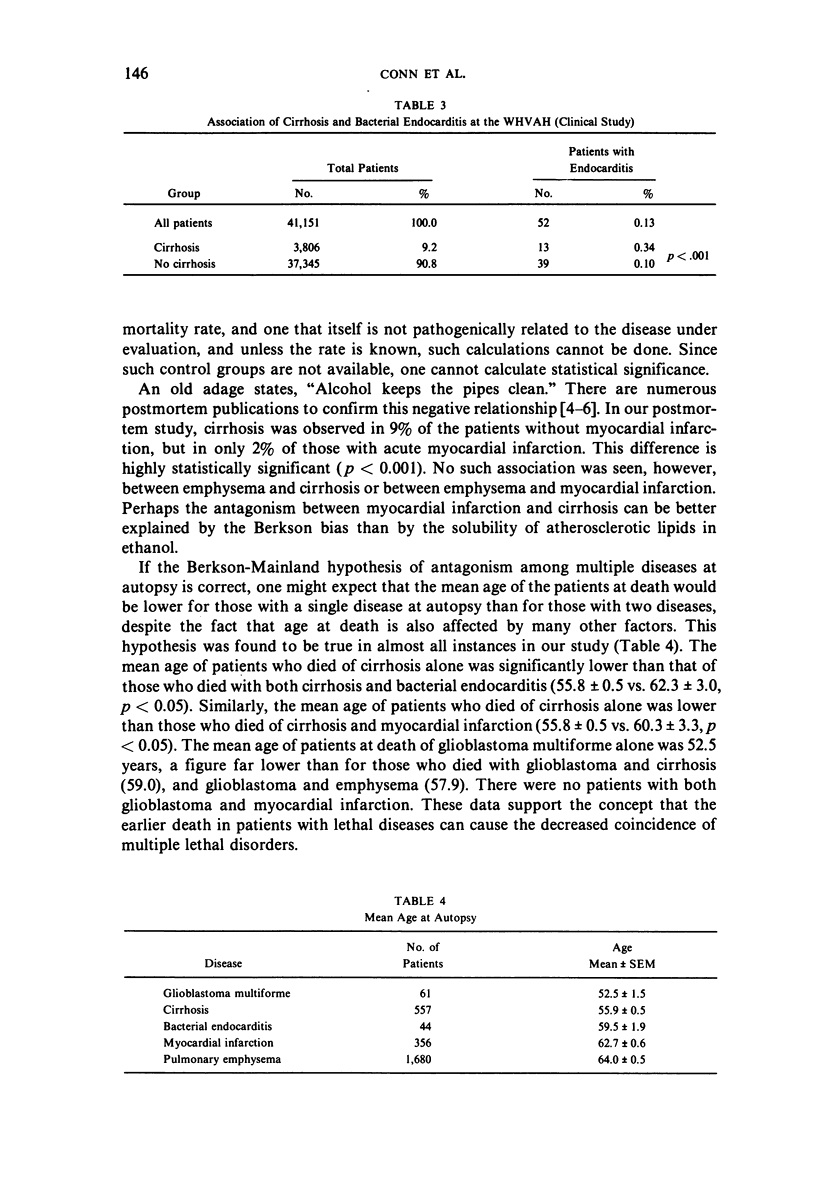Abstract
Thirty years ago Berkson recognized that differences in selection rates of different diseases for admission to the hospital will systematically change the frequency with which those diseases co-exist in hospitalized patients from the frequency rate in the general population. Mainland subsequently demonstrated that postmortem studies systematically show a lower co-morbidity rate for any two individually lethal diseases than would be expected from the individual prevalence of these diseases. In studying the concurrence of bacterial endocarditis and cirrhosis, we examined the relationship of these diseases at autopsy where, according to this concept, we would expect a negative association. We found the frequency of bacterial endocarditis to be three times greater in cirrhotic than in non-cirrhotic patients, a statistically significant difference that was even more convincing, since a negative correlation was anticipated. In accord with the Berkson-Mainland hypothesis, however, no such association was seen between bacterial endocarditis and either emphysema or myocardial infarction, two other chronic diseases of different lethality. Similarly, glioblastoma multiforme, a brain tumor with a high mortality rate, showed a negative correlation with cirrhosis, emphysema, and myocardial infarction. A corollary of this bias—that the mean age at death should be lower in patients dying with two lethal diseases than in patients dying of either disease alone—was supported by our study. This investigation provides evidence to validate the Berkson-Mainland hypothesis, and suggests that rather than being always an adverse bias, it may be used beneficially to document the validity of the increased co-existence of diseases at autopsy.
Full text
PDF






Selected References
These references are in PubMed. This may not be the complete list of references from this article.
- GRANT W. C., WASSERMAN F., RODENSKY P. L., THOMSON R. V. The incidence of myocardial infarction in portal cirrhosis. Ann Intern Med. 1959 Oct;51:774–779. doi: 10.7326/0003-4819-51-4-774. [DOI] [PubMed] [Google Scholar]
- HOWELL W. L., MANION W. C. The low incidence of myocardial infarction in patients with portal cirrhosis of the liver: A review of 639 cases of cirrhosis of the liver from 17,731 autopsies. Am Heart J. 1960 Sep;60:341–344. doi: 10.1016/0002-8703(60)90192-7. [DOI] [PubMed] [Google Scholar]
- MAINLAND D. The risk of fallacious conclusions from autopsy data on the incidence of diseases with applications to heart disease. Am Heart J. 1953 May;45(5):644–654. doi: 10.1016/0002-8703(53)90306-8. [DOI] [PubMed] [Google Scholar]
- RUEBNER B. H., MIYAI K., ABBEY H. The low incidence of myocardial infarction in hepatic cirrhosis. A statistical artefact? Lancet. 1961 Dec 30;2(7218):1435–1436. doi: 10.1016/s0140-6736(61)91250-8. [DOI] [PubMed] [Google Scholar]
- Roberts R. S., Spitzer W. O., Delmore T., Sackett D. L. An empirical demonstration of Berkson's bias. J Chronic Dis. 1978 Feb;31(2):119–128. doi: 10.1016/0021-9681(78)90097-8. [DOI] [PubMed] [Google Scholar]


